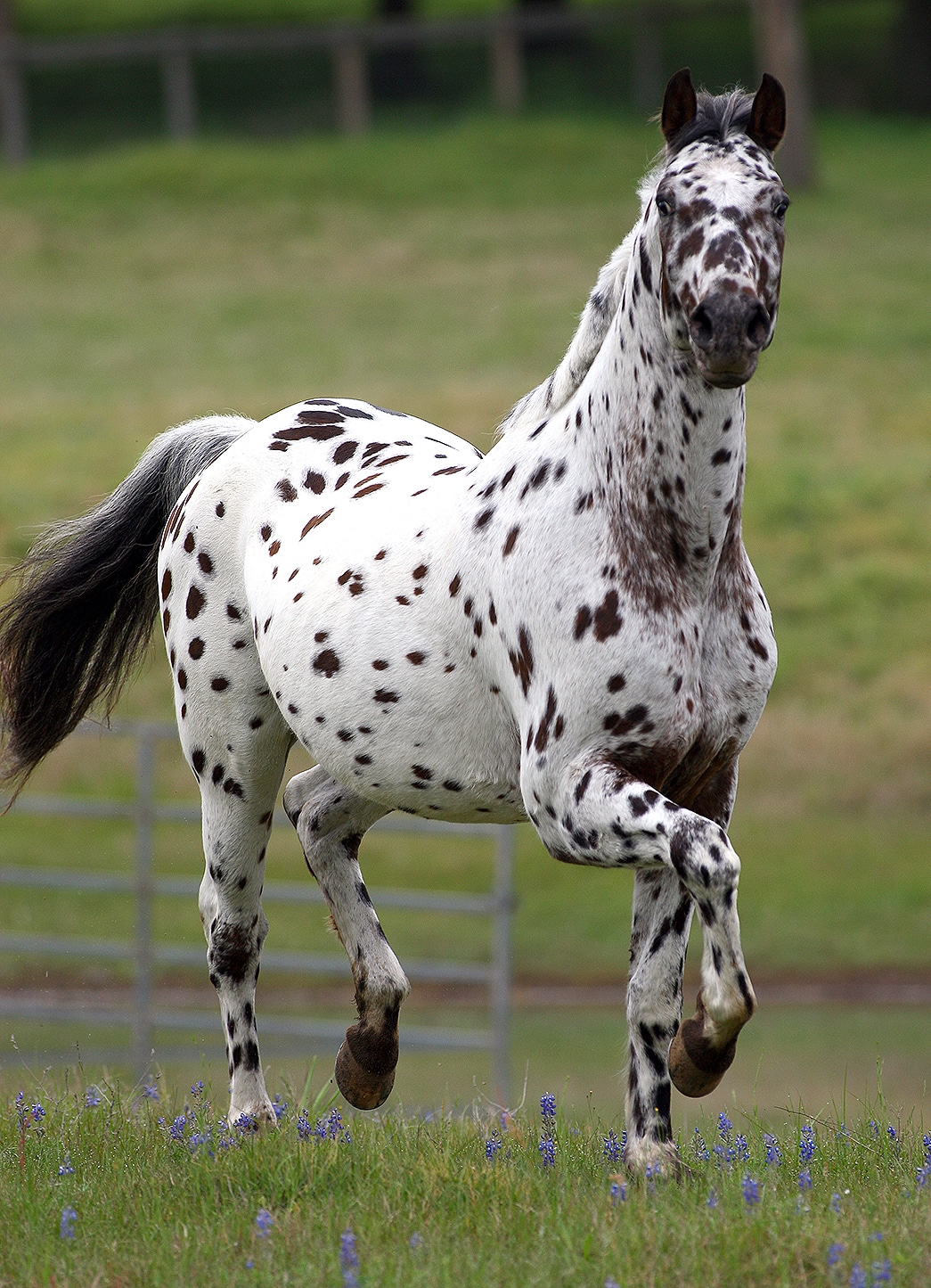The Knabstrupper (or Knabstrup) is a breed from Denmark with a startlingly unique spotted coat. The breed dates back to its origins in 1812, when a mare named ‘Flaebe’s mare’ of unknown origin (possibly Iberian) was purchased by Villars Lunn of the manor house Knabstrupgaard. The dark chestnut covered with small white snowflakes always produced foals with spectacular coat patterns; she was mated with a palomino Frederiksborg stallion and their offspring, The Flaebestallion, became the foundation of the Knabstrupper breed.
In the mid-1800s Knabstruppers were used as military mounts, but unfortunately their flashy coats made them easy targets. Further problems arose because of inbreeding at the Lunn stud, which resulted in a loss of quality and therefore the breed’s popularity. A fire which killed 22 horses in 1891 contributed to the Knabstrupper almost vanishing.
In order to restore the breed, breeders began outcrossing Knabstrup horses, creating a new and improved strain of spotted horses. In 1971 the association Knabstrupperforeningen for Danmark was formed, the same year three Appaloosa stallions were imported to give a fresh boost to the breed.
Characteristics
Knabstruppers have a notable spotted coat that can range from a few spots to full leopard markings (although some are born with solid bay, grey or chestnut coats). They have a noble head, small, pricked ears, expressive eyes, a square muzzle, and a high-set neck. The breed has well-developed shoulders, a broad chest, long back, moderately sloped quarters, powerful legs, and good natural paces. Hooves are light-coloured or striped.
The Knabstrupper breed is lively and friendly, smart, easy to train, kind, willing to work, and takes direction well. They normally stand between 15.2-16 hands.
Uses
The Knabstrupper is generally divided into three ‘types’: Sport Horse, Baroque, and Pony. The Sport Horse type is crossed with warmbloods to excel in dressage, eventing and show jumping; the Baroque type is shorter and broader and was very popular as a circus horse; the Pony type is smaller and suitable a a child’s mount.
For more information, visit:
American Knabstrupper Association



